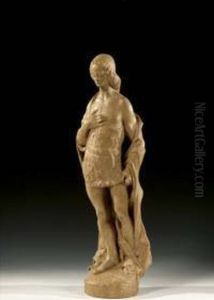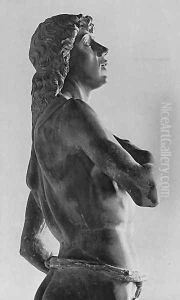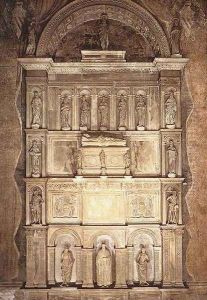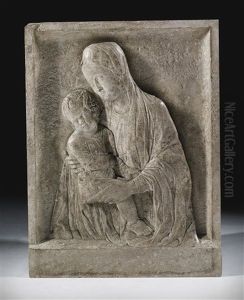Antonio Rizzo Paintings
Antonio Rizzo was an influential Italian sculptor and architect who played a significant role in the development of Venetian Renaissance art. Born around the year 1440, Rizzo's early life and training are not well documented, but he is believed to have been active in Venice by the 1470s. His work signifies a transition from the Gothic tradition to the Renaissance style, blending classical influences with the decorative intricacies typical of Venetian art of the time. Rizzo is best known for his contributions to the architectural and sculptural decoration of the Doge's Palace in Venice, one of the city's most iconic buildings.
Rizzo's most celebrated works include the Scala dei Giganti (Staircase of the Giants), which leads to the main halls of the Doge's Palace, and the statues of Adam and Eve, originally placed beside the staircase but now housed in the Museo dell'Opera. These works showcase his mastery of human anatomy and his ability to imbue marble with a sense of vitality and movement. Rizzo's involvement with the Doge's Palace also included architectural contributions, highlighting his versatility and importance in the Venetian art scene.
Despite his achievements, Rizzo's career was not without controversy. In 1498, he was accused of embezzlement and fled Venice, leaving a tarnished legacy that somewhat obscured his artistic contributions. He is believed to have died around 1499, possibly in Ferrara. Despite the scandal, Rizzo's influence on Venetian Renaissance art remains significant. His ability to combine architectural and sculptural elements in a harmonious manner helped to pave the way for later artists of the Renaissance period. Today, Antonio Rizzo is remembered as a key figure in the transition towards a more classical expression in Venetian art, bridging the gap between the medieval and the modern.




